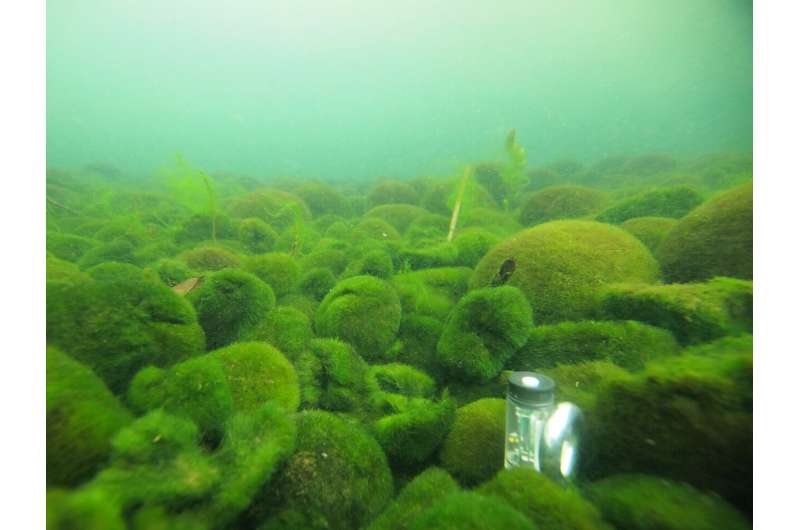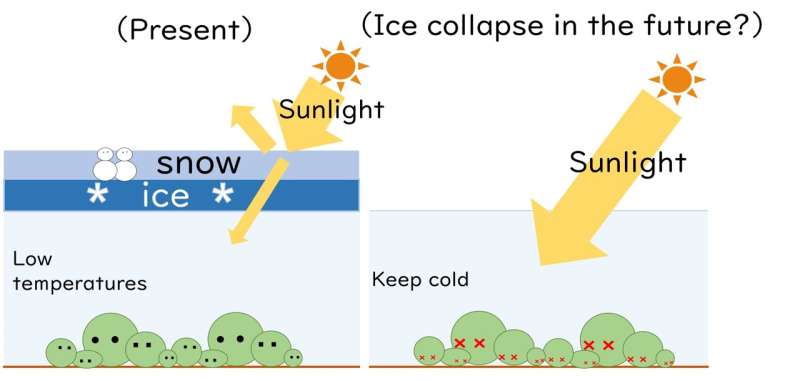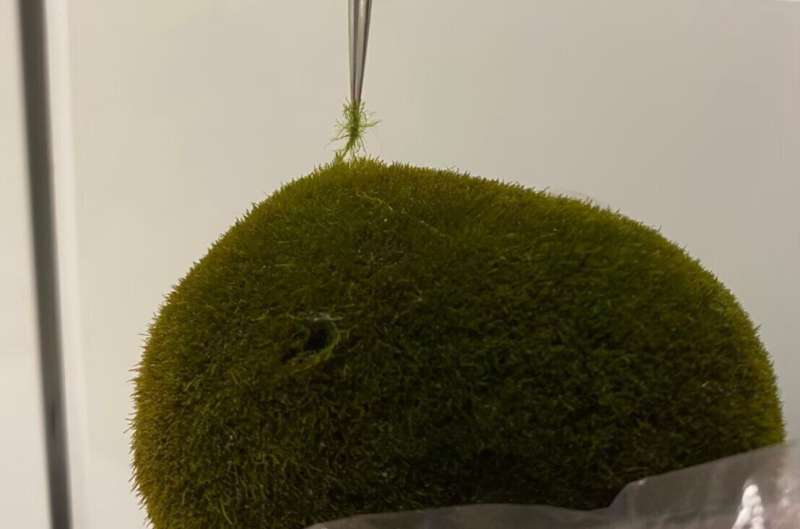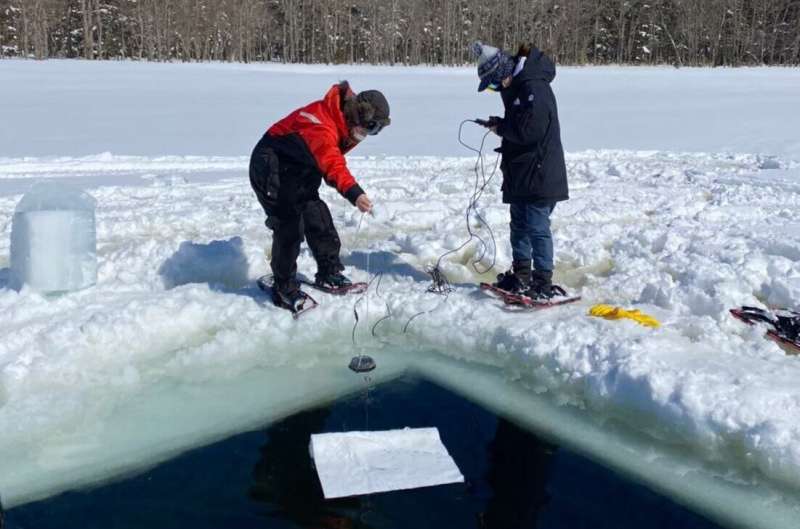Massive ‘marimo’ algae balls at risk for deadly winter sunburn

Climate change could overexpose rare underwater “marimo” algae balls to sunlight, killing them off, according to a new study at the University of Tokyo. Marimo are living fluffy balls of green algae. The world’s largest marimo can be found in Lake Akan in Hokkaido, Japan’s northern main island.
Here they are sheltered from too much winter sunlight by a thick layer of ice and snow, but the ice is thinning due to global warming. Researchers found that the algae could survive bright light for up to four hours and would recover if then placed under a moderate light for 30 minutes. However, the algae died when exposed to bright light for six hours or more. The team hopes this discovery will highlight the threat of climate change to this endangered species and the urgent need to protect their habitat.
Some people have pet cats, others pet rocks, but how about pet algae? Marimo are fluffy, squishy green balls of underwater algae which have become popular with tourists, nature enthusiasts and aquarium owners. They range in size from about a pea to a basketball, and form naturally when floating strands of the algae Aegagropila linnaei are bundled together through the gentle rolling motion of lake water.
They are only found in a few countries and the largest marimo, found in Lake Akan, can grow up to 30 centimeters in diameter. In Japan, they are so popular that they have their own annual festival, merchandise and even a mascot. However, marimo are an endangered species and globally their numbers are generally in decline.
Marimo rely on nutrients and photosynthesis to survive. Their decline is usually attributed to human intervention altering or polluting the freshwater lakes in which they live. However, there has not been much research into the effect of changing access to sunlight.
“We know that marimo can survive bright sunlight in warm summer waters, but the photosynthetic properties in marimo at low winter temperatures have not been studied, so we were fascinated by this point,” said Project Assistant Professor Masaru Kono from the Graduate School of Science at the University of Tokyo. “We wanted to find out whether Marimo could tolerate it and how they respond to a low-temperature, high light-intensity environment.”

Kono and team visited Lake Akan’s Churui Bay in winter to measure the temperature and light intensity underwater, both with and without ice cover. First, they bored a small hole in the ice 80 meters offshore and then carved a large 2.5 meter-by-2.5 meter square to take readings from. They also carefully collected several marimo balls about the size of a shot put (10–15 cm) by hand.
Back in Tokyo, the team recreated the environmental conditions using trays of ice made with an icemaker and white LED lamps. Algae strands were removed from the marimo balls and tested for their normal photosynthetic ability. They were then placed in containers in the ice under the artificial light, which was adjusted to shine at different intensities for different periods of time.
“We demonstrated a new finding that damaged cells in marimo can repair themselves even after exposure to simulated strong daylight for up to four hours at cold temperatures (2–4 degrees Celsius), when followed by moderate light exposure for just 30 minutes. This moderate light had a restorative effect which did not occur in the dark. However, when exposed to strong daylight for six hours or more, certain cells involved in photosynthesis were damaged and the algae died, even after being treated with moderate light,” explained Kono.
“These results suggest that photoinhibition (the inability to photosynthesize due to cell damage) would be a serious threat to marimo in Lake Akan, which receives more than 10 hours of sunlight a day in winter, if global warming proceeds and ice cover recedes.”

Next, the team want to find out what would happen to whole marimo balls and whether the outcome would be the same as with the smaller threads.
“In the present study, we used dissected filamentous cells, so we did not consider the effects of the structure of the spherical marimo and how it might protect against exposure to bright light. However, if damage to the surface cells increases under longer exposure to the direct sunlight, in an extreme case, this may affect the maintenance of their round bodies and lead to the disappearance of giant marimo. So, we need to constantly monitor the conditions at Lake Akan in the future,” said Kono.

Kono hopes this research will help both local and national governments to understand the urgent need to protect Japan’s unique marimo and their habitat. “We also hope this will be an opportunity for all people to think seriously about the effects of global warming,” he said.
The paper is published in the International Journal of Molecular Sciences.
More information:
Akina Obara et al, Effects of High Irradiance and Low Water Temperature on Photoinhibition and Repair of Photosystems in Marimo (Aegagropila linnaei) in Lake Akan, Japan, International Journal of Molecular Sciences (2022). DOI: 10.3390/ijms24010060
Citation:
Massive ‘marimo’ algae balls at risk for deadly winter sunburn (2022, December 23)
retrieved 23 December 2022
from https://phys.org/news/2022-12-massive-marimo-algae-balls-deadly.html
This document is subject to copyright. Apart from any fair dealing for the purpose of private study or research, no
part may be reproduced without the written permission. The content is provided for information purposes only.
For all the latest Science News Click Here
For the latest news and updates, follow us on Google News.

